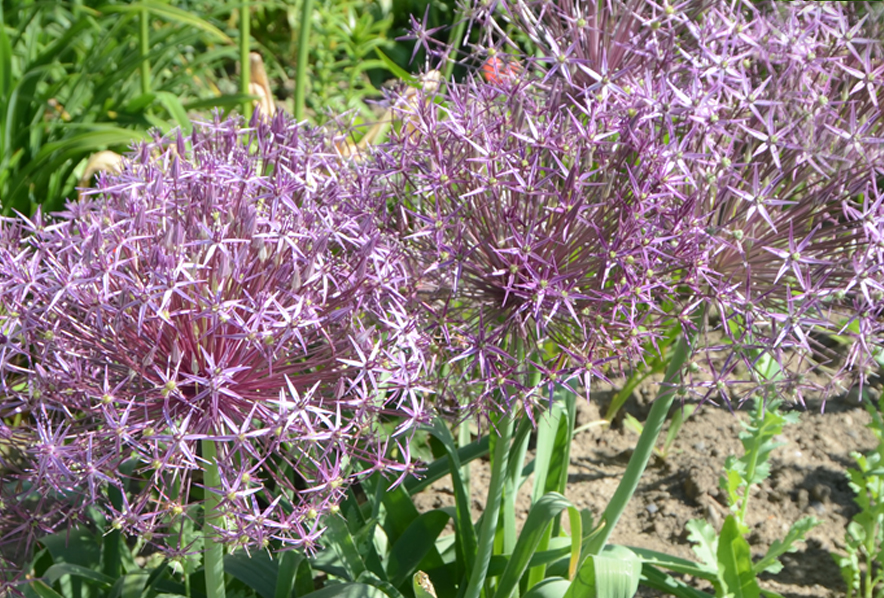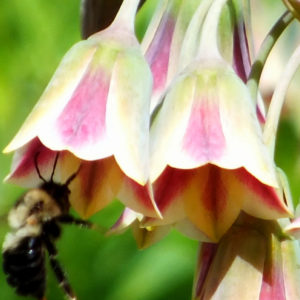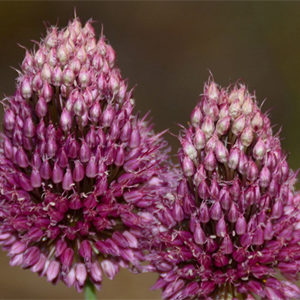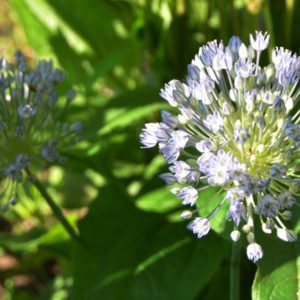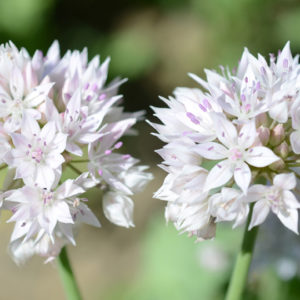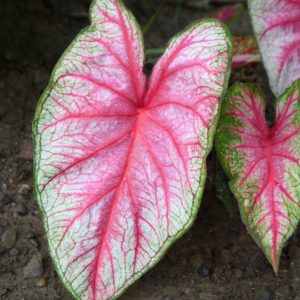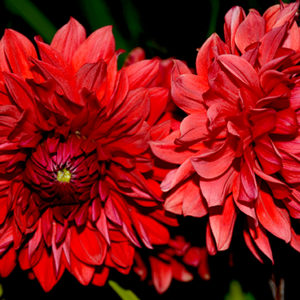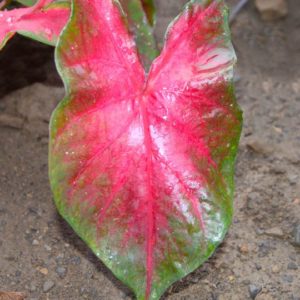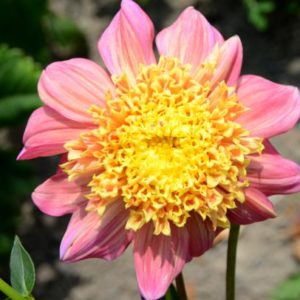Description
 Allium,
Allium,
Christophii
The Allium family includes an enormous collection of plants including leeks, onions, elephant garlic and shallots. There are more than 200 species and thousands of cultivars. In the wild, they are found all over the Northern Hemisphere including North America, the Middle East, western China, the Pyrenees, the Alps and the Mediterranean. They flourish with exposure to full sun, in rugged mountainous areas where the ground drains quickly and completely. They also love bonemeal, so add a generous helping of bonemeal (1/4 cup) to the hole where you plant each bulb.
Of all the ‘critter resistant’ bulbs, the Alliums are the most ‘critter resistant’. Deer, rabbits, squirrels, mice, moles and voles cannot stand the smell of Alliums. The fragrance is so strong and so offensive to critters that Alliums can be used to deter the critters from tulips and other more vulnerable bulbs. A critter has to be really desperate to eat an Allium.
Allium christophii, until recently was known as Allium albopilosum. Its common name is Star of Persia. Christophii is native to the mountainous regions of Turkestan, central Anatolia, Khorastan and east and central Iran where it grows at elevations of 3000-7400 feet in the rocky, soil-deficient scree that covers the mountainsides. It was introduced to European and British gardeners in 1884. In 1901, Christophii reached American gardeners. In 1903, the Dutch bulb firm, Van Tubergen, began cultivating Christophii bulbs for the commercial marketplace for distribution internationally.
Allium christophii has, perhaps, the largest globes in the Allium family. Its globes can reach a diameter of 10-12 inches and often do. The flowers are actually umbrels which consist of 60-100, 6-8 inch, dark purple, sometimes metallic-blue, stalks that circle evenly around a central mass forming a large globe. At the end of each stalk is the real flower, a floret, which is a 6 pointed star with a bright green center.
The globes are positioned on a single sturdy stem that is only 12-14 inches tall. Including its globe, an average Christophii is usually no more than 18-24 inches tall. Unlike many Alliums which form densely clustered, fuzzy balls on the top of their stems, Christophii’s globe is a lacey, elegant ball where each starry flower can be appreciated. These “balls” are among the longest lasting of all Alliums. HZ: 4-8 12-24” Early Season
Unquestionably, one of the most enchanting attributes of this flower is its transformation into a fairy wand. Few children could deny the existence of fairies once they see the Christophiis in a mid-to-late summer garden. Like Allium karativiense, and most Allium actually, Christophii puts on a show from the beginning of its blossom life until the very end.
Plant Allium christophii bulbs at least 8-10 inches deep and 12 inches apart and don’t forget to add a quarter cup of bonemeal to each bulb hole. They need full sun and do best when grown in loamy soil.
Planting Bulbs in the Fall for Glorious Spring Color
Bulbs are some of the easiest plants to grow. Fundamentally the process requires four steps.
1. Dig a hole.
2. Dust the hole with bonemeal.
3. Place the bulb in the hole.
4. Fill the hole with soil.
There are, however, some additional refinements which help produce even more lavish results and enhance protection from critters.
First, bulbs can and should be planted deeper than the instructions you receive on the package labels. An easy way to remember how deep to plant the bulb is to think of a quarter. If the bulb you are planting has the same diameter as a quarter or less, plant the bulb 4 inches deep. If the bulb is broader than a quarter, plant it 6-10 inches deep. Large bulbs like some alliums, camassias, standard tulips and fritillaries can easily be planted 10 inches deep. As the soil compacts days, weeks and months after planting, it produces a thinner layer of soil on top of the bulb. Planting bulbs deep helps with critter control. Moles, voles, chipmunks and squirrels are lazy little creatures, and they don’t like doing a lot of digging to reach their food.
Second, bonemeal is a must. It is an excellent source of calcium and phosphorus which help the bulbs to form a strong root system and healthy stems. For large bulbs (those bigger than a quarter), use ¼ cup per bulb. For small bulbs, dust the entire surface or hole where the bulbs will reside.
Third, small bulbs should be planted in clusters of 10 or more – 1 inch apart. Large bulbs, like allium, can stand along, but create a much more pleasing presence in the garden when planted is clusters of 3-5. They should be separated by no more than 4-6 inches.
Fourth, bulbs usually multiply fairly quickly and once crowded will not produce blossoms. Plan to divide your bulbs in mid-summer to fall when the top growth has dried out.
These simple, easy, quick tasks are all that is required to produce a lovely bulb display year after year.
Planting Bulbs in Containers
If you live in Hardiness Zones 5 and higher all you need to do is mix some soil. . Check out the soil mix described in detail in our Harvesting History YouTube video. Do not use prepared soil mixes.
The Best Soil Mix for Containers
Always plant bulbs more densely in containers than in the ground. Pots as small as 6-inches in diameter can have a showy presence on a deck, porch or patio. You can use much larger pots and plant several kinds of bulbs.
Fill the pot half full, dust the soil surface with bonemeal, arrange the bulbs on top of the bone meal and fill the pot with the rest of the soil. Dust the surface of the soil with more bonemeal. Water thoroughly, but do not let the pot stand in a saucer of water.
If you live in Hardiness Zones 1-4, you must protect the pots by bringing them into an unheated garage or surrounding them with bales of straw. If you do not do this, the bulbs usually freeze and turn to mush.

